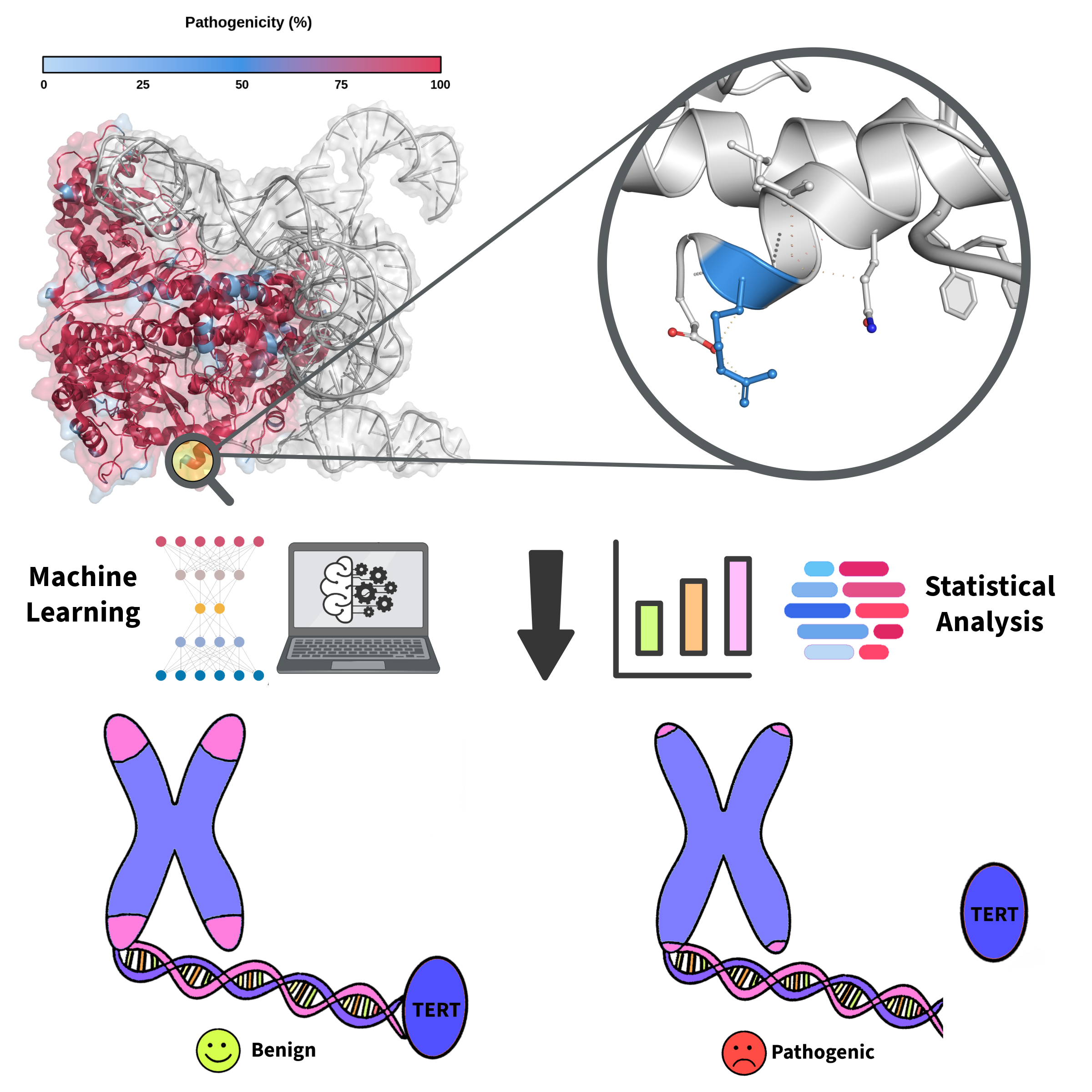CharacTERT A Machine Learning Tool for Classifying hTERT Missense Mutations
Georgina Becerra Parra, Yoochan Myung, Qisheng Pan, Stephanie Portelli, Jessica K. Holien, Niles Nelson, Joanne Dickinson, Sionne Lucas, Tracy M. Bryan, David B. Ascher
Abstract: Missense mutations in TERT, the gene encoding the human telomerase catalytic subunit hTERT that is essential for telomeric DNA elongation, are associated with Telomere Biology Disorders (TBDs). Experimentally elucidating the effects of all possible missense mutations would be time-consuming and technically challenging. Moreover, current computational predictors are not TERT-specific and primarily rely on sequence information, failing to capture the complex biological and structural context of the telomerase enzyme. In this work, we developed three machine learning models integrating both sequence- and structure-based features to account for the biological mechanisms of hTERT. Compared to state-of-the-art methods, our best-performing model achieved a Matthew’s Correlation Coefficient (MCC) of 0.88 on ClinVar and gnomAD curated variants and demonstrated robust sensitivity (0.73) on a dataset curated according to guidelines from the American College of Medical Genetics and Genomics and Association for Molecular Pathology (ACMG/AMP). Feature interpretation highlighted hTERT residue conservation and changes in hydrophobic and weak polar interactions as critical determinants of pathogenicity, consistent with previous findings. Finally, in silico saturation mutagenesis was performed to present a mutational landscape of TERT, available in a user-friendly web server, CharacTERT, which could offer valuable insights into the molecular mechanisms driving TBDs, aid in early diagnosis, as well as guide personalized treatment strategies.
